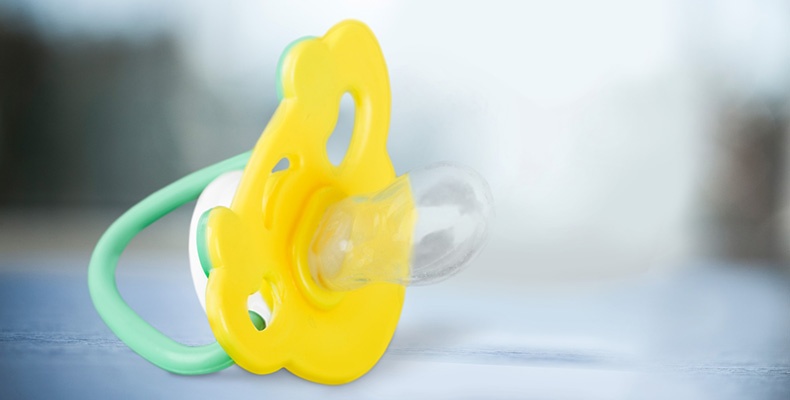Pacifiers and their Effects
 Pacifiers are one of the hardest habits to break in a developing child and may require a great deal of persuasion. Parents often struggle greatly with weaning their child off of a pacifier.
Pacifiers are one of the hardest habits to break in a developing child and may require a great deal of persuasion. Parents often struggle greatly with weaning their child off of a pacifier.
There is much debate regarding pacifiers and their use however there is evidence to show they may have both positive and negative effects on child development.
The positive effects of pacifiers result from the sucking process. According to the American Board of Paediatric Dentistry “they assist in reducing the incidence of sudden death infant syndrome (SIDS). Babies who are offered a pacifier do not sleep as deeply as those who sleep without a pacifier. Pacifier sucking makes it possible for the infant to be aroused from a deep sleep that could result in the stopping of breathing. Pacifiers also increase sucking satisfaction and provide a source of comfort to infants.”
The negative effects of pacifier sucking on a child’s oral health are often not known to parents. Children should stop using pacifiers by age 2. Until age 2 any alignment problems with the teeth or the developing facial bones is usually corrected within a 6-month period after pacifier use is stopped. Prolonged use of a pacifier or thumb sucking may cause problems with the proper development of the mouth, alignment of the teeth and changes the shape of the roof of the mouth (palate).
An association between pacifier use and acute middle ear infections (otitis media) has been clearly noted. Continuous sucking on a pacifier causes the auditory tubes to become abnormally open thus allowing secretions from the throat to leak into the middle ear. These secretions are laden with bacteria and thus promote middle ear infections. If your child is continuously suffering with middle ear infections it would be wise to remove the pacifier.
Methods to break the pacifier habit:
- Dip the pacifier in vinegar making it distasteful
- Pierce the nipple of the pacifier OR cut it shorter thereby reducing the sucking satisfaction
- Leave it behind on a trip
- Implement the “cold turkey” method
Recommendations:
- Pacifier use should be restricted to the time the child is falling asleep
- The pacifier shield can often lacerate the lips and should be kept out of the mouth
- Look for a pacifier with ventilation holes in the shield to allow air passage as the pacifier may accidentally lodge in your child’s throat
- Do not place a cord around the pacifier to prevent accidental strangulation. Look for a pacifier that has a ring.
- Dispose of the pacifier regularly as it may become unsanitary and may transfer unwanted bacteria
